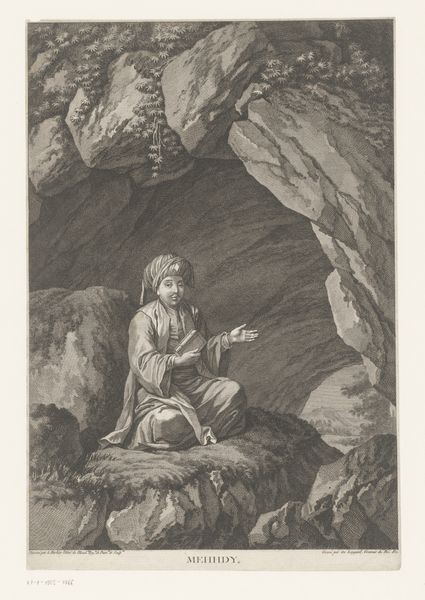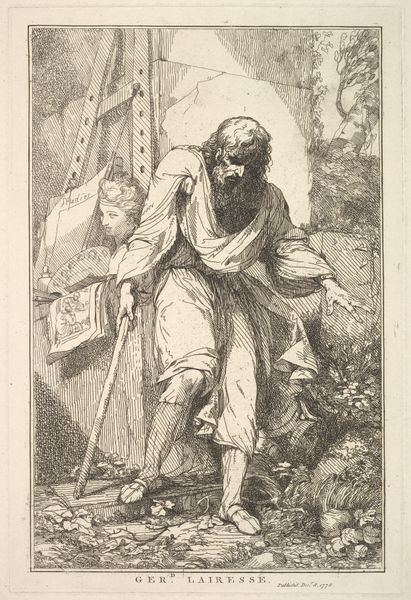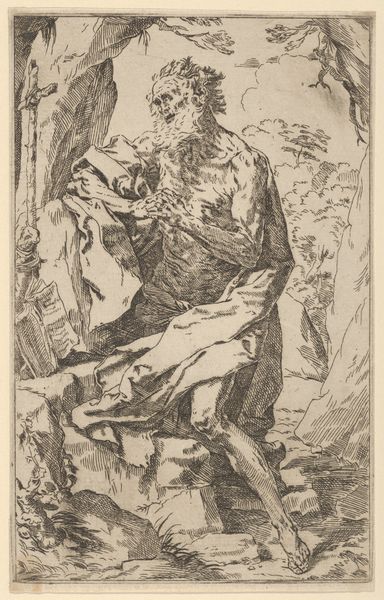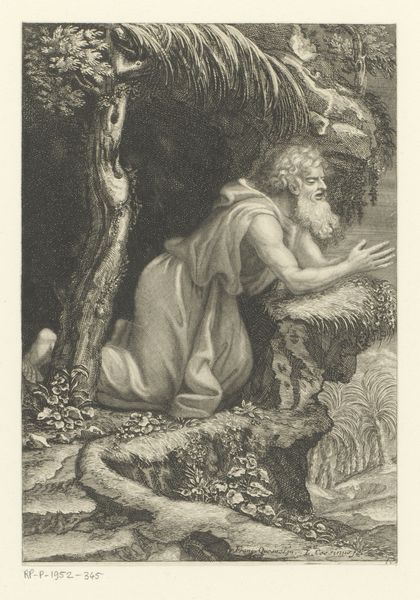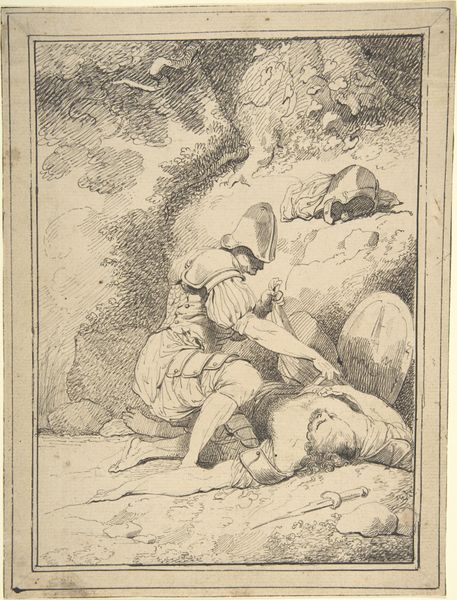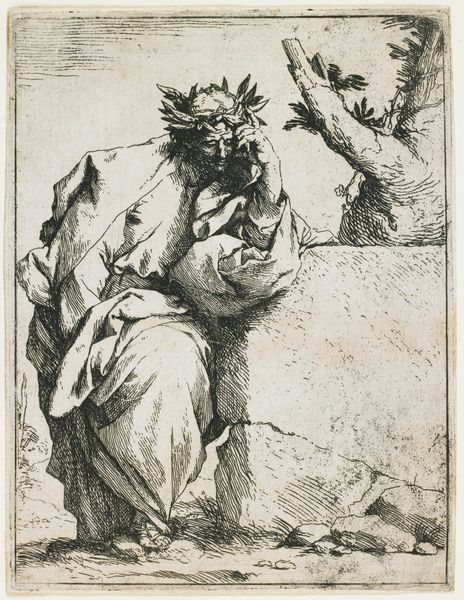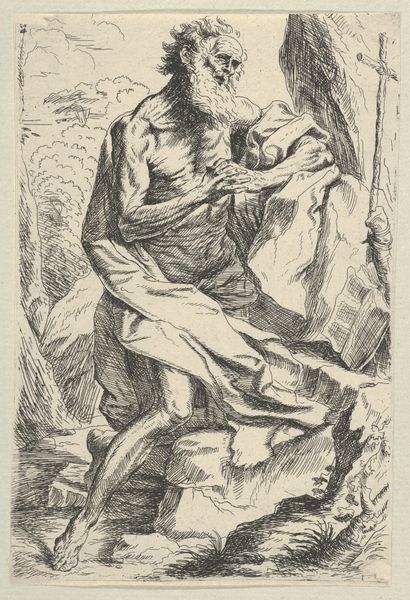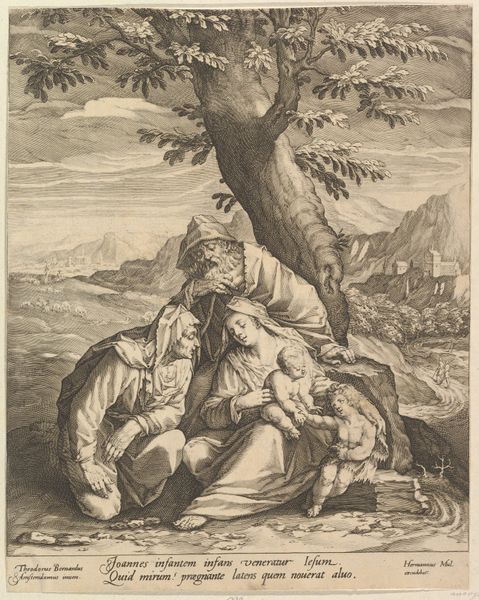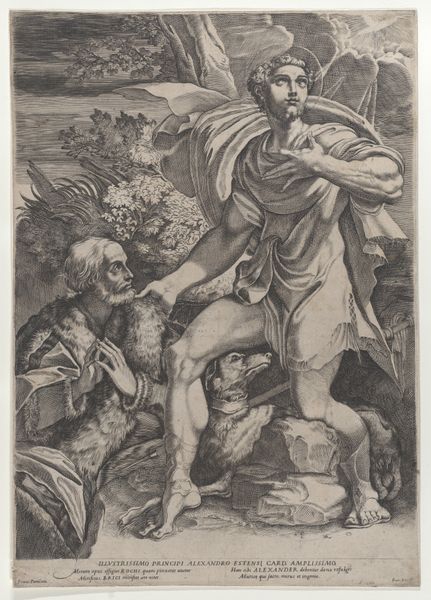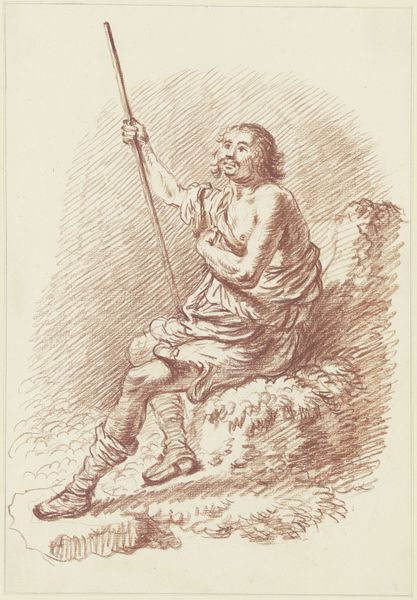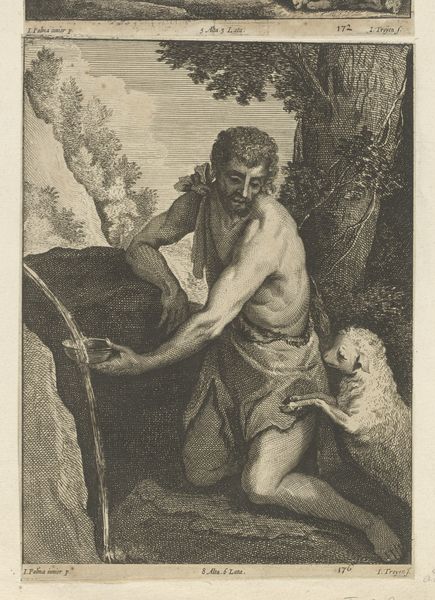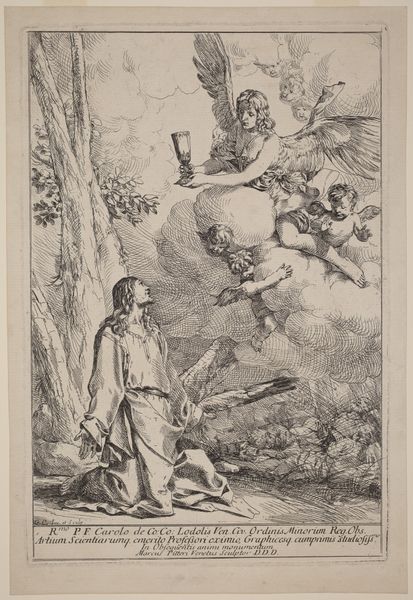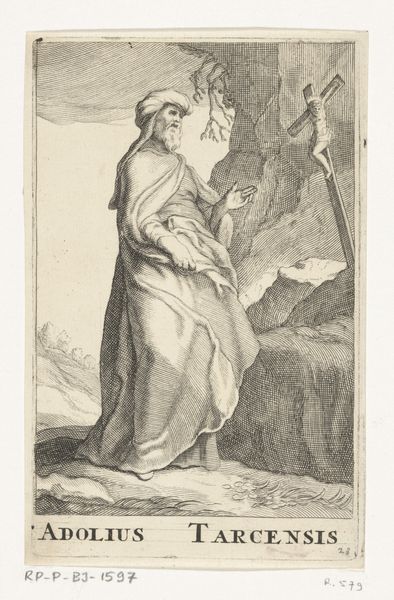
Salvator Rosa, from "Fifteen Etchings Dedicated to Sir Joshua Reynolds" 1778
0:00
0:00
Dimensions: Sheet: 10 11/16 x 6 15/16 in. (27.2 x 17.7 cm)
Copyright: Public Domain
Curator: Here we have "Salvator Rosa, from 'Fifteen Etchings Dedicated to Sir Joshua Reynolds.'" Created in 1778 by John Hamilton Mortimer, and housed here at the Metropolitan Museum of Art, it’s a compelling print. What's your immediate reaction? Editor: Stark. Raw emotion rendered in stark black lines. The wild, almost tortured figure dominates the composition, exuding an inner turmoil that's palpable. Curator: It's intriguing how Mortimer evokes that drama. Salvator Rosa was, himself, quite the iconoclast. Mortimer admired him greatly, and this etching, part of a series dedicated to Reynolds, seems a gesture toward Rosa's romantic individualism, as understood by artists in Mortimer’s circle. Consider the late 18th century's obsession with the "noble savage." Editor: The symbols support that idea. The exposed foot, the disheveled hair, the half-discarded armor, it all screams "rejecting civilization." And yet, he's poring over a drawing or a map... grappling with something intellectual. There is such fascinating tension between reason and instinct. It’s like a visual representation of a mind at war. Curator: Precisely! And the choice of etching allows for a directness, an immediacy that mirrors the figure's supposed state of mind. The network of lines create depth and shadow. This portrait engages with prevailing artistic ideas, such as the rise of history-painting as a theme in itself. Mortimer himself contributed to this movement with powerful history paintings such as, "King John Signing Magna Carta". Editor: The wild setting contributes, too. Look at the scraggly tree overhead and tangled undergrowth; Nature, red in tooth and claw. That’s what this work suggests about Rosa as the man of passion. Curator: The etching as a print also plays an important part in his cultural history; making Rosa’s image widely accessible. Editor: It all reinforces the image of the tormented, creative genius. I can see why Reynolds was impressed by it. It speaks volumes about the Romantic era’s fascination with intense individuality. Curator: Yes, a tribute and testament. A lasting impression on those who understood his world. Editor: Quite thought-provoking, even today, reminding us that such battles rage within all of us.
Comments
No comments
Be the first to comment and join the conversation on the ultimate creative platform.
